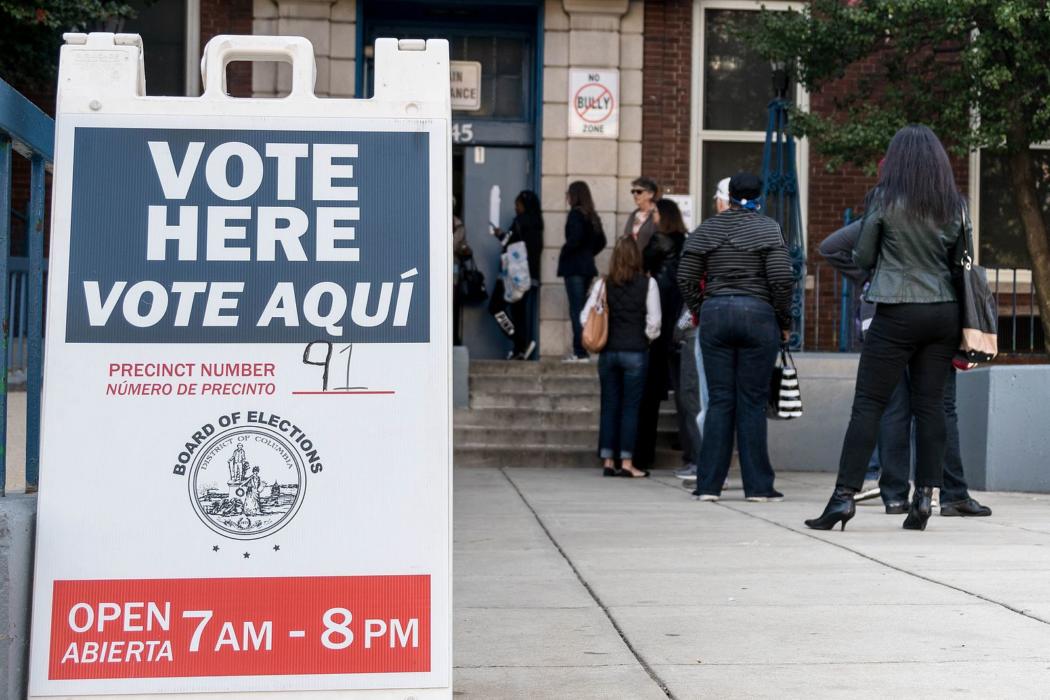We’re at the point in the election cycle when actual results aren’t deemed as important as what they forebode about what is going to happen in November. That is particularly true of yesterday’s special election in Ohio’s 12th Congressional District. Prognosticators deemed the race too close to call and they were right. At this point, it looks like Republican Troy Balderson is going to eek out a victory against Democrat Danny O’Connor.
It’s interesting to look at what a few Republicans are saying about that race’s results. The best spin Mitch McConnell’s former chief of staff, Josh Holmes, can provide is that “odds are still favoring House Dems in November but last night’s result didn’t add to that narrative in my view.” Here’s what former RNC Chair Michael Steele said:
There’s a lot to say about #Ohio12th but what can’t be said is the GOP is on firm footing for Nov. THIS is the reddest CD in the state and the GOP can barely hold it?! What do you think those less-red districts across the country look like tonight for Democrats #RealWins
— Michael Steele (@MichaelSteele) August 8, 2018
With all of that said, this might be the biggest takeaway from that race:
The most significant harbinger from the Ohio race may not be the narrow margin, but the turnout gap between the most and least heavily populated parts of a district that absorbs the close-in suburbs of Columbus and rural stretches of central Ohio.
In both Franklin County, which includes Columbus, and Delaware County, the fast-growing suburb just north of Ohio’s capital, 42 percent of voters turned out. But in the five more lightly populated counties that round out the district, turnout ranged from 27 to 32 percent.
This is an ominous sign for Republicans: The highest-income and best-educated elements of the electorate — those deeply uneasy with President Trump — are showing the most interest in voting. Defending a few dozen districts that are either more heavily urban or feature a similar demographic mix as Ohio’s 12th District, Republicans will need to find a way to win back suburbanites or better galvanize rural voters. If they do not, their House majority will slip away.
When it comes to primaries, the biggest news for Republicans is that in the Kansas governor’s race, Kris Kobach is beating the guy who took over when when Sam Brownback resigned to accept an ambassadorship, Jeff Colyer, by 0.1 percentage points. A Kobach win would provide a rich target for the Democratic nominee, Laura Kelly.
Speaking of Laura Kelly, the big news for Democrats is once again about women, especially in governor’s races. Gretchen Whitmer will be the nominee in Michigan to take on Republican Bill Schuette.
Their victories [Kelly and Whitmer] bring to 11 the number of women nominated for governorships this year — a breakthrough in a political arena, executive offices, that has been especially unfriendly to women in the past.
The one narrative that continues to not be the story for Democratic primaries is the one about insurgents winning against the establishment. As I’ve written previously, the initial story was that the establishment was winning. That one flipped when candidates like Alexandria Ocasio-Cortez defeated incumbent Joe Crowley. But both she and Bernie Sanders came out strongly for Abdul El-Sayed, who was competing against Gretchen Whitmer to be the nominee in the Michigan governor’s race. He lost by over 20 points. Contrary to the spin put on that by pundits like David Weigel, the prognosticators had also gotten that one right all along. Whitmer had always polled way ahead of El-Sayed, so her victory shouldn’t have come as a surprise to anyone. Instead of an attempt to once again flip the narrative, what we’ve been seeing all along is that different candidates prevail in different areas of the country.
In a race that won’t get as much attention, a significant milestone was reached.
Former Michigan state Rep. Rashida Tlaib has won the Democratic nomination to run unopposed for the House seat long held by former Rep. John Conyers, setting her up to become the first Muslim woman elected to Congress.
Finally, in a race I highlighted when talking about Native-American women running for office, Sharice Davids will be the Democratic nominee in Kansas’ 3rd congressional district. She narrowly beat Brent Welder, who was also supported by Alexandria Ocasio-Cortez and Bernie Sanders. Davids now faces an uphill battle against incumbent Republican Kevin Yoder. But here’s a reminder of what she brings to that race:

Those are a few of the highlights of what happened at the polls yesterday. Other than barely winning a special election in a very red district, there wasn’t much good news for Republicans. Prognosticators were vindicated in most of their predictions, which means that a blue wave is still very possible in November.



